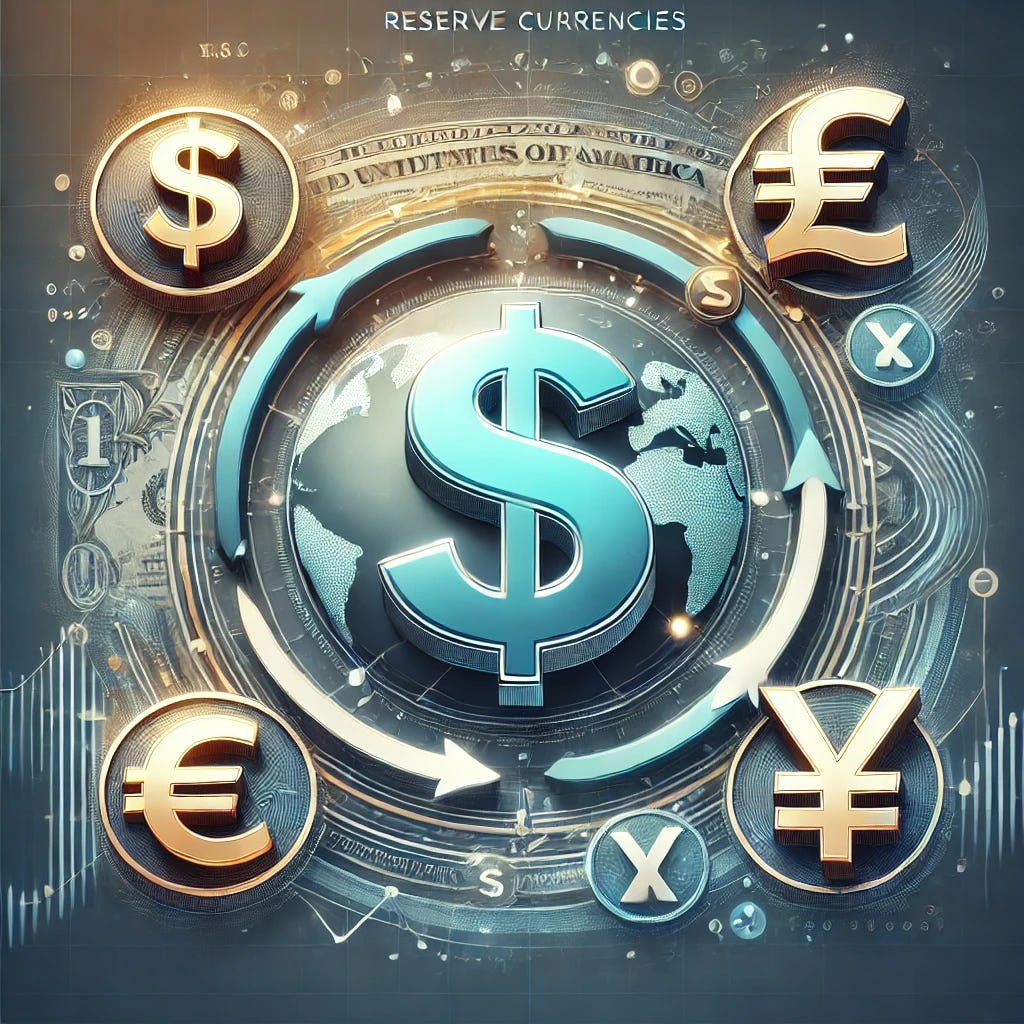When people think about global economics, one cornerstone topic often flies under the radar: reserve currencies. These currencies aren’t just international symbols of wealth—they’re the foundation of global trade, investment, and economic stability. The U.S. dollar has held the title as the world's primary reserve currency since the end of World War II, but shifts in geopolitics and economic policy are sparking questions about how long it can keep that status.
Let’s dive into what this potential shift means, why it’s happening, and what to watch for in the coming years.
What is a Reserve Currency?
A reserve currency is a type of currency that is widely used around the world for global trade and is held in significant quantities by central banks and other financial institutions as part of their foreign exchange reserves. The dollar currently holds this status, with the euro, Japanese yen, British pound, and Chinese yuan also in the mix.
Holding the world’s reserve currency gives a country major economic perks, including lower borrowing costs and greater influence in international finance. For the U.S., the dollar’s status means it can issue debt relatively cheaply, and U.S. Treasury bonds are seen as a “safe haven” for global investors.
Why the Dollar’s Dominance is Being Questioned
Several factors are putting pressure on the dollar's dominance as the world's go-to currency:
Geopolitical Tensions
Sanctions on Russia, a significant global economy, have prompted several countries, including China, Russia, and India, to consider ways to bypass the dollar for international trade. Additionally, strained relations between the U.S. and other countries (like China) encourage these nations to diversify their currency reserves to minimize reliance on the dollar.The Rise of the Chinese Yuan
China has been on a steady path to internationalize the yuan, particularly in Asia, Africa, and the Middle East. Through its Belt and Road Initiative, China has fostered relationships and offered loans denominated in yuan, encouraging borrowing nations to increase their own yuan reserves. Plus, the yuan’s inclusion in the International Monetary Fund’s Special Drawing Rights (SDR) basket has helped legitimize its role as a global currency.Economic Stability and Debt Levels
The U.S. national debt is now well over $30 trillion, with interest payments alone comprising a significant chunk of annual spending. As debt continues to rise, some countries fear that the dollar could lose value, prompting central banks to diversify their holdings.The Digital Currency Movement
Countries around the world are developing Central Bank Digital Currencies (CBDCs), and some (notably China) have already piloted digital versions of their currency for domestic and international use. This tech shift has the potential to make international transactions smoother and more efficient, and it’s particularly advantageous to countries wanting to bypass the dollar-based system.
What Happens if the Dollar Loses Its Reserve Currency Status?
A shift away from the dollar would mean huge changes, not just for the U.S., but for the global economy as a whole:
Increased Borrowing Costs for the U.S.
If fewer countries use the dollar as their main reserve currency, demand for U.S. Treasury bonds could fall, which might force the U.S. to offer higher interest rates to attract buyers. Higher borrowing costs could lead to an increase in national debt, squeezing the federal budget.Volatility in Foreign Exchange Markets
With no clear successor to the dollar, a world without a single, dominant reserve currency could experience higher volatility in exchange rates. This would make international trade riskier, impacting prices for consumers and profits for multinational companies.Reduced U.S. Influence in Global Affairs
Dollar dominance has allowed the U.S. to use economic sanctions as a powerful foreign policy tool, from freezing assets to restricting access to the global financial system. A reduction in dollar usage could dilute U.S. leverage in international conflicts or negotiations.
Could Another Currency Take the Lead?
While the euro and yuan are the strongest potential contenders, neither is without challenges. The euro faces structural issues within the Eurozone, where individual countries don’t always agree on fiscal policy. The yuan, meanwhile, is still tightly controlled by the Chinese government, and the currency lacks the transparency and stability many investors prefer.
What to Watch Going Forward
Growth of Non-Dollar Trade Agreements
Keep an eye on countries that form trade deals using currencies other than the dollar. For instance, India and Russia have explored trade arrangements using the Indian rupee, and Saudi Arabia has indicated interest in accepting yuan for oil sales to China.Digital Currency Adoption
The rollout and adoption of CBDCs, especially by major economies, could shift the balance of power in international finance. China’s digital yuan, in particular, is one to watch as it expands in pilot programs and increases cross-border payment potential.Central Bank Reserve Composition
Every year, the International Monetary Fund (IMF) releases data on the currency composition of official foreign exchange reserves. Watch for any significant shifts in holdings as central banks adjust their reserves to reflect the changing economic landscape.
Final Thoughts
While the dollar is unlikely to be dethroned overnight, the world is in a period of flux. Changes in geopolitics, technology, and economic policy mean that the reserve currency landscape could look very different a decade from now. Whether this shift happens or not, staying informed and understanding the implications is crucial for anyone looking to navigate an increasingly interconnected and uncertain global economy.
As always, stay tuned here at Wealthy Waters for more deep dives into how these global shifts could affect your wallet and the world economy.



